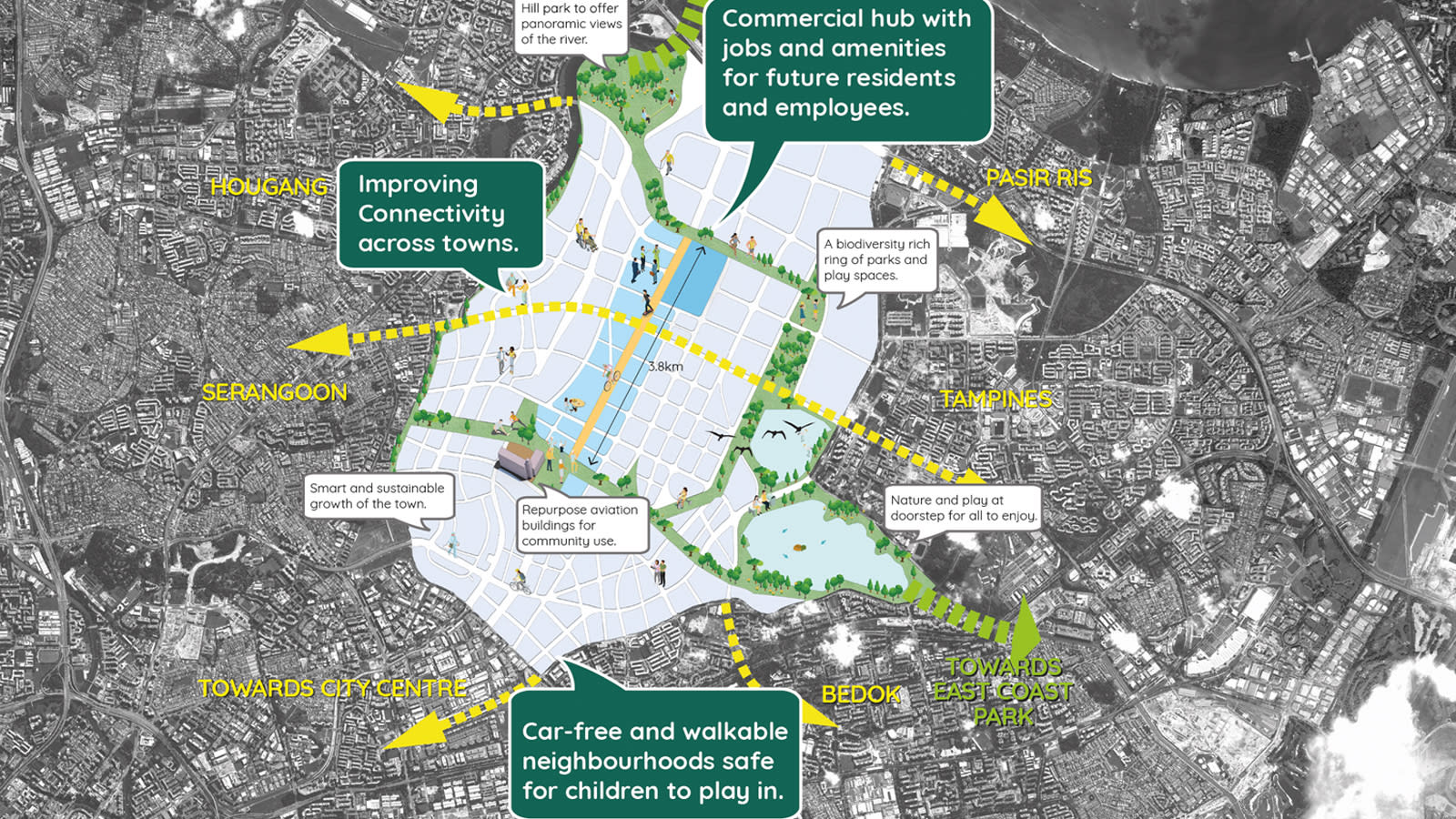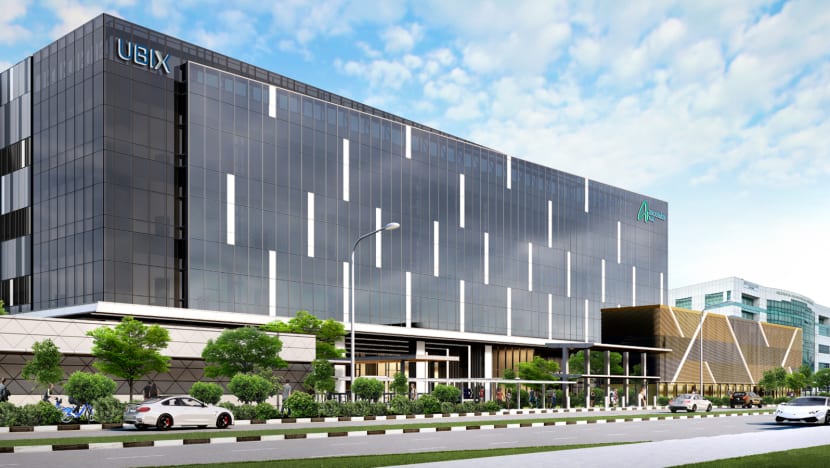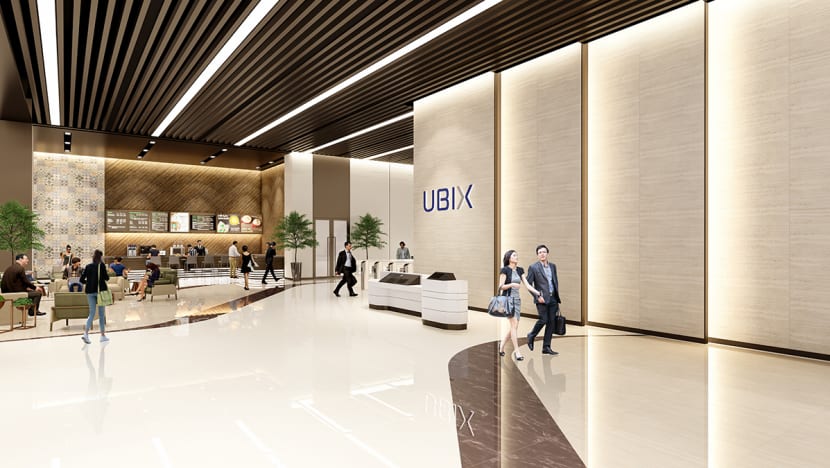Paya Lebar-Ubi commercial precinct: An innovation hotbed for businesses
In addition to the exciting lifestyle developments at Paya Lebar, the area’s city-fringe location and excellent connectivity make it a vibrant hub for the light manufacturing, research and tech sectors.

Businesses in sectors like tech and other modern industries could receive an uplift from the infrastructure and opportunities afforded by the Paya Lebar-Ubi ecosystem. Photo: Shutterstock
As part of its roadmap to meet future needs, the Urban Redevelopment Authority (URA) has earmarked several precincts for urban transformation. These key growth areas will undergo development to encourage economic expansion and bring jobs and amenities closer to residents. They include the Changi Region, Greater Southern Waterfront, Kallang River, Paya Lebar Airbase and Punggol Digital District.
In particular, the announced relocation of Paya Lebar Airbase from 2030s onwards has been greeted with significant interest and buzz. The anticipated freeing up of 800 hectares of land – a space around five times the size of Toa Payoh – and the corresponding relaxation of building height limits will potentially pave the way for the development of new housing, offices, factories, facilities and parks. This rejuvenation promises greater liveability and sustainability, while building on the district’s unique aviation-oriented heritage.

Tradition will soon co-exist with high-tech developments. URA’s urban transformation plan for Paya Lebar includes a commercial hub interspersed with green spaces and enhanced connectivity to surrounding residential towns, giving companies easy access to the workforce in areas like Hougang and Serangoon as well as the Tampines commercial hub. The neighbouring district of Ubi is also undergoing its own evolution from an industrial landscape to a thriving business precinct.
UNDER ONE ROOF
In an effort to encourage decentralisation of economic activity, the Paya Lebar-Ubi district has been identified as an upcoming sub-regional hub offering alternative and affordable spaces for industrial and commercial operations based on the appropriate land use zoning. The combination of multiple mixed-use developments and connections to expressways and major roads makes Paya Lebar-Ubi an attractive prospect for businesses, especially those looking to have both their offices and production facilities in the same space.
Ms Catherine He, CBRE’s director of research, Southeast Asia, stated that cost-conscious occupiers, in particular, stand to reap substantial savings by shifting their non-client-facing functions to decentralised offices.
She elaborated: “More companies are adopting a hub-and-spoke model in their real estate needs, with an office in town and satellite offices elsewhere. What’s more, Paya Lebar-Ubi is easily accessible as it is at the intersection of the Circle and East-West MRT lines and is supported by the widening transport network in Singapore, with the Thomson East-Coast Line and Cross Island Line in the works.”
Ms Constantia Ang, sales and marketing director of IT solutions provider AddOn Systems, said that relocating to KA Centre in Kampong Ampat near Tai Seng MRT was a sound choice for the company due to the area’s affordable rental and convenient location.
“Having our office near our customers is our main priority. KA Centre is a stone's throw from transport nodes and expressways, making it easily accessible for our clients based in the city,” she said.

Ms He also highlighted Paya Lebar-Ubi’s relative proximity to the Central Business District (CBD) as an attractive factor for organisations prioritising business continuity, cost efficiency and employees’ well-being in their choice of satellite office locations.
“With the intent to bring jobs closer to home, urban spaces near the city fringe are gradually transformed by leveraging the convenience and proximity of last-mile transportation and amenities to office occupiers,” she explained. “Such attributes are important for talent attraction and retention, which in turn, are a draw for business owners.”
Furthermore, the proximity of the industrial estates within the Paya Lebar-Ubi precinct to Changi Airport and Changi Aviation Park will shorten the last-mile delivery for manufacturing and e-commerce companies, while organisations could benefit from a workforce residing at the upcoming residential developments in the area.
Many in the light manufacturing, logistics and technology sectors as well as leading corporations have recognised the potential of the area. Besides cost effectiveness, a tighter integration of space, amenities and facilities is anticipated to improve workflow and drive innovation within the workforce.
BUILT TO MEET CHANGING TIDES

Keeping pace with the future of work, the move towards decentralisation is on the cards for industry players from sectors like banking, financial technology, information technology, gaming, healthcare, biopharma and e-commerce. This could take the form of setting up locations that combine office headquarters with backend operations and light industrial activities in developments that offer large contiguous spaces. Competitive rental rates and proximity to the city are often top-of-mind considerations for businesses looking to adopt the hub-and-spoke model.
The five-storey UBIX in Ubi industrial hub that will be completed by Q1 2022 could be a viable option for such businesses. The premium B1 development has industrial features such as high ceilings of up to 4.8m and a wide column span, a boon for companies dealing in consumer goods or those involved in the production and distribution process.

Another hallmark of Paya Lebar-Ubi’s future-forward spaces is the use of sustainable design. Amid the rise in workers cycling to work and Singapore’s shift to becoming car-lite, new buildings like UBIX are equipped with on-site end-of-trip facilities such as bicycle parking lots, shower facilities and lockers. Climate-responsive features like energy-saving lights, water-efficient fittings and sensors have been implemented to help companies meet sustainability goals.
Nearby, properties such as 31 Ubi Road 1 and Ubi Biz-Hub also make apt bases that support functions such as manufacturing, lab work, research and development, product design and development. The neighbourhood is already home to heavyweights such as mainboard-listed Aztech Technologies and Ban Leong Technologies. More organisations are expected to establish roots in the area, harnessing the infrastructure and opportunities afforded by the Paya Lebar-Ubi ecosystem.

As the Paya Lebar-Ubi precinct continues to evolve, its winning combination of thoughtfully-designed workspaces, copious lifestyle and dining amenities, and strategic location will reshape the district’s industrial landscape, ready to adapt to future developments.
Learn more about CapitaLand’s light and premium industrial properties in this up-and-coming estate.















